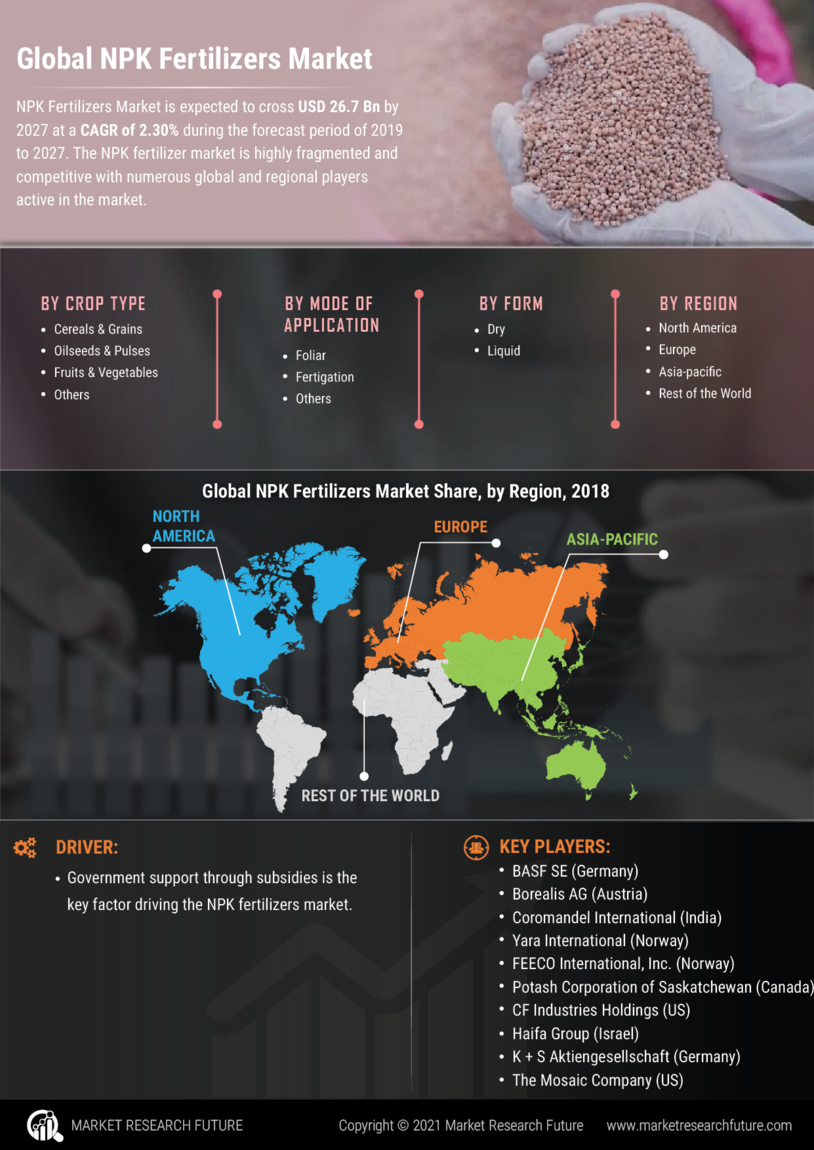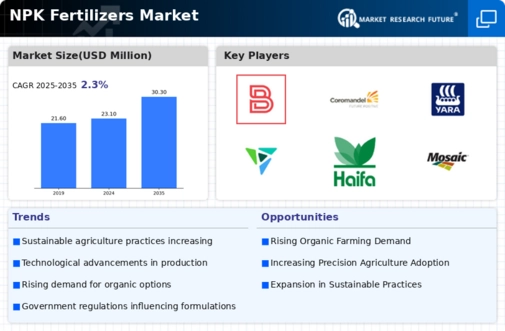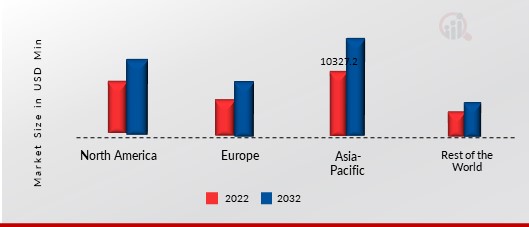Global Trade Dynamics
The dynamics of global trade are influencing the Global NPK Fertilizers Market Industry, particularly as countries seek to enhance their agricultural productivity. Trade agreements and international collaborations facilitate the exchange of fertilizers, allowing countries with surplus production to supply those with deficits. This interconnectedness is likely to bolster market growth, as access to NPK fertilizers becomes more widespread. Additionally, fluctuations in commodity prices and trade policies can impact the availability and pricing of fertilizers, creating opportunities for market expansion. As global trade continues to evolve, the NPK fertilizers market is poised to adapt and thrive.
Market Trends and Projections
The Global NPK Fertilizers Market Industry is projected to experience steady growth, with a market value of 23.1 USD Billion in 2024 and an expected increase to 30.3 USD Billion by 2035. This growth trajectory suggests a compound annual growth rate (CAGR) of 2.51% from 2025 to 2035. Factors such as increasing agricultural demand, technological advancements, and government initiatives are likely to drive this expansion. The market's evolution will be closely monitored as it adapts to changing agricultural practices and global trade dynamics.
Increasing Agricultural Demand
The Global NPK Fertilizers Market Industry is experiencing heightened demand due to the increasing global population and the corresponding need for food production. As the world population is projected to reach approximately 9.7 billion by 2050, the agricultural sector must enhance productivity to meet this demand. NPK fertilizers play a crucial role in improving crop yields, thereby supporting food security initiatives. In 2024, the market is valued at 23.1 USD Billion, indicating a robust growth trajectory. This trend suggests that the industry will continue to expand as farmers seek efficient solutions to maximize their output.
Rising Awareness of Soil Health
There is a growing recognition of the importance of soil health in agricultural practices, which is positively impacting the Global NPK Fertilizers Market Industry. Farmers are increasingly aware that healthy soil is essential for sustainable crop production and long-term agricultural viability. This awareness drives the demand for NPK fertilizers, which provide essential nutrients that enhance soil fertility. As educational campaigns and research highlight the benefits of balanced fertilization, the market is likely to see a surge in demand. This trend aligns with the broader movement towards sustainable agriculture, further solidifying the market's growth potential.
Government Initiatives and Subsidies
Government policies and initiatives aimed at promoting agricultural productivity are pivotal drivers of the Global NPK Fertilizers Market Industry. Many countries are implementing subsidy programs to encourage farmers to utilize NPK fertilizers, thereby enhancing crop yields and ensuring food security. For instance, various governments are providing financial assistance and educational resources to promote the use of balanced fertilizers. This support is likely to stimulate market growth, as farmers are more inclined to invest in NPK fertilizers when financial barriers are reduced. Such initiatives contribute to the overall market value, projected to reach 30.3 USD Billion by 2035.
Technological Advancements in Fertilizer Production
Technological innovations in the production of NPK fertilizers are significantly influencing the Global NPK Fertilizers Market Industry. Advanced manufacturing techniques, such as precision agriculture and smart fertilizers, are enhancing the efficiency and effectiveness of nutrient delivery to crops. These innovations not only improve crop yields but also reduce environmental impacts, aligning with sustainable agricultural practices. As a result, the market is likely to see increased adoption of these technologies, contributing to its growth. The anticipated CAGR of 2.51% from 2025 to 2035 reflects the potential for continued advancements in fertilizer production.


 Source: Secondary Research, Primary Research, Market Research Future Database and Analyst Review
Source: Secondary Research, Primary Research, Market Research Future Database and Analyst Review





